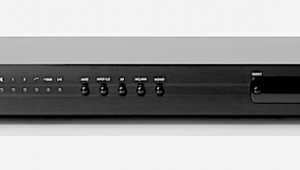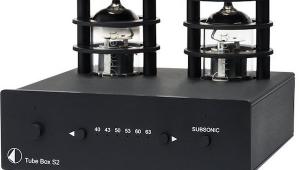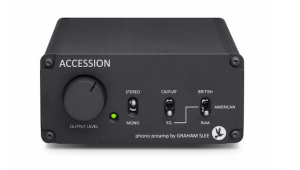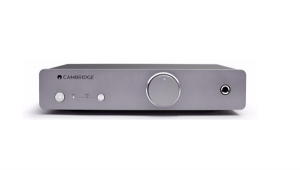Wow, the review of the Whest PhonoStage.20 is impressive! Although there are some weak points about RIAA and rice purity test, the measurement performance and extremely low distortion make me feel excited. It's worth experiencing the "live" sound it brings!
Whest PhonoStage.20 phono preamplifier Measurements
Following his auditioning of the Whest PhonoStage.20 + MSU.20 (serial numbers 07.01.010201.21 and 08.01.0201.21, respectively), Brian Damkroger sent me the units to measure. The PhonoStage proved relatively immune to grounding issues between it and my test equipment. The 1kHz voltage gain in moving-magnet (MM) mode measured 40.9dB; switching to moving-coil (MC) mode increased the gain to 64.3dB. The MM mode was noninverting; the MC mode inverted absolute polarity. The input impedance in MM mode appeared to be much higher than the specified 47k ohms, although it's possible that there was some interaction between the Whest and my signal generator that interfered with the measurement. Set to MC mode, without any loading resistors, the Whest appeared to have an input impedance of 2k ohms in the midrange and treble, this decreasing to 407 ohms at 20Hz rather than the specified 100 ohms.
The PS.20's output impedance varied with frequency while also depending on whether the preamp was set to MM or MC. In MC mode, the source impedance varied from 1 ohm at 20kHz to 463 ohms at 1kHz to more than 7k ohms at 20Hz. In MM mode I measured 21.5 ohms at 1kHz, this increasing to 3.5k ohms at 20Hz. The Whest needs to be used with a preamp having an input impedance of at least 47k ohms if its tonal balance is not to be skewed toward the high frequencies.
Even so, and even with the 100k ohm input impedance of my Audio Precision System One analyzer, the Whest's RIAA response showed an increasingly positive error above the audioband (fig.1), reaching +3dB at 47kHz and +6dB at 70kHz. In their literature, Whest makes much of the PS.20's extended high-frequency response, saying that the amplifier uses a "newly developed filter" that, together with the RIAA filter, "allows the PhonoStage.20 to play back up to 60kHz." From the look of the response error in fig.1, it appears that Whest has chosen not to continue the usual ultrasonic rolloff of the RIAA de-emphasis. In my opinion this is misguided, as the HF content of record ticks will be emphasized, though whether or not that will result in audible problems will depend on the components downstream of the PS.20.

Fig.1 Whest PS.20, RIAA error (right channel dashed, 1dB/vertical div.).
It is at the other end of the spectrum that the Whest's departure from correct RIAA de-emphasis has definite subjective consequences. The lower midrange and bass are shelved down by 1dB or so, which I suspect is why BD found the preamp's tonal balance "vivid...somewhat elevated in the midrange and upper midrange."
Channel separation (not shown) was good rather than great, at 50dB in both directions at 1kHz, though it did improve at higher frequencies. Noise levels were generally low, with an A-weighted signal/noise ratio in MM mode of 67.8dB (ref. 1kHz at 5mV). This worsened to 59dB, wideband, unweighted, and to 50dB in MC mode. (The additional gain is achieved at the expense of S/N ratio.)
The Whest offers very low distortion—<0.01% THD+noise for high-level 1kHz tones—with superb overload margins in MM mode: no less than 30dB at 20Hz and 1kHz, this worsening only slightly at 20kHz, to 20.3dB. Despite the extra gain in MC mode, the overload margins were only slightly less superb, at 26dB and 16.9dB, respectively. Aiding that excellent linearity, the only distortion harmonics visible above the noise floor in fig.2 were both low in order and very low in level. With a 9mV input signal at 1kHz, the second harmonic was the highest in level, at just –103dB (0.0007%)! With the additional gain required in MC mode, this rose by 20dB, to a still low –82.5dB (not shown). Intermodulation distortion was also vanishingly low (fig.3).

Fig.2 Whest PS.20, MM mode, spectrum of 1kHz sinewave, DC–1kHz, at 1V into 8k ohms (linear frequency scale).

Fig.3 Whest PS.20, MM mode, HF intermodulation spectrum, DC–25kHz, 19+20kHz at 1V into 8k ohms (linear frequency scale).
While the Whest PS.20 offers superb measured performance in some areas—very low distortion, very high overload margins—it is idiosyncratic in others, particularly regarding its departure from an accurate RIAA de-emphasis at low and ultrasonic frequencies. I was also bothered by the dependence of both its input and output impedances on frequency, which will make its sound quality something of a moving target, depending on the source and amplification components it is used with.—John Atkinson
- Log in or register to post comments



















































